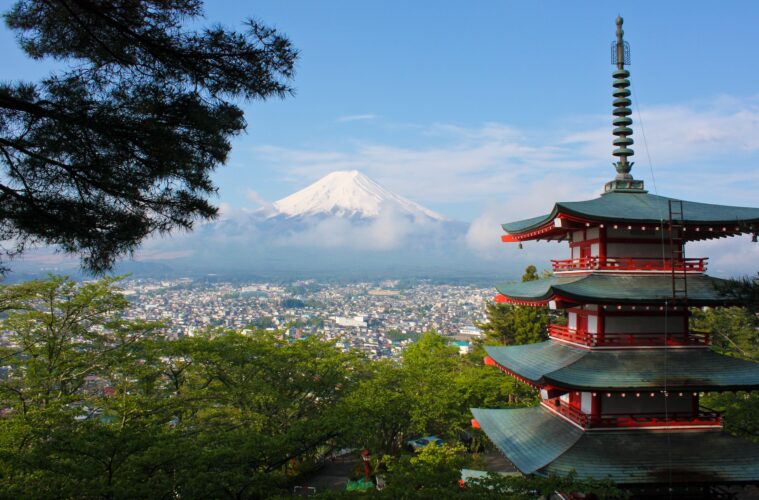Japan, a country rich in history and culture, has captivated the world with its unique blend of ancient traditions and modern innovation. At the heart of this captivating tapestry lies Kyoto, a city that serves as a time capsule, preserving the essence of Japan’s past while embracing the present and future. Stepping into Kyoto is like entering a realm where samurai tales come to life, where cherry blossoms whisper secrets of the past, and where the harmony of tradition and progress finds its ultimate expression.
A Glimpse into Kyoto’s Historical Legacy:
Kyoto, situated in the Kansai region of Japan, was the imperial capital for more than a millennium. Its history stretches back over a thousand years, and the city’s very name evokes images of ancient temples, grand palaces, and the revered samurai warriors who once walked its streets. The city’s historical significance is palpable, as it was witness to pivotal events that shaped Japan’s identity and destiny.
One of the most iconic symbols of Kyoto’s historical legacy is Kinkaku-ji, the Golden Pavilion. This Zen Buddhist temple, adorned with gold leaf and reflected in the shimmering waters of a tranquil pond, stands as a testament to the opulence and artistic refinement of a bygone era. The pavilion’s reflection is a reminder that history’s echoes can still be felt in the present, and its beauty resonates with visitors from around the world.
Samurai: The Noble Warriors of Kyoto:
No exploration of Kyoto’s history would be complete without delving into the world of the samurai. These noble warriors, skilled in the art of the sword and bound by a strict code of honour known as bushido, were central to Japan’s feudal society. Kyoto’s ancient streets were once the training grounds and battlegrounds of these samurai, and their stories are woven into the fabric of the city.
The Fushimi Inari Taisha shrine, famous for its vibrant torii gates that lead up to Mount Inari, holds a special place in samurai lore. This sacred site was dedicated to Inari, the Shinto god of rice and prosperity, and samurai would often visit the shrine to seek divine protection before embarking on their journeys. The torii gates, each donated by individuals or businesses, symbolise the intertwining of faith, community, and duty – values that resonated deeply with the samurai ethos.
The Path of Tranquility: Kyoto’s Temples and Gardens:
Kyoto’s allure extends beyond the battlefield and into the realm of tranquillity and reflection. The city boasts a multitude of temples and traditional Japanese gardens that offer a respite from the hustle and bustle of modern life. Among these, the Ryoan-ji temple is renowned for its Zen rock garden – a minimalist masterpiece that invites contemplation and inner peace. With its precisely raked gravel and carefully placed rocks, the garden embodies the Zen philosophy of simplicity and the art of finding beauty in the subtlest of details.
The Ginkaku-ji, or Silver Pavilion, stands in contrast to the Golden Pavilion but is no less captivating. Surrounded by meticulously manicured gardens, this temple is a testament to the aesthetic sensibilities of Kyoto’s cultural elite. The Silver Pavilion embodies the wabi-sabi concept, celebrating the beauty of imperfection and the transience of life. The ethereal beauty of the temple and its surroundings is a poignant reminder of the impermanence that underlies all things.
Kyoto’s Living Traditions and Modern Renaissance:
While Kyoto’s history and traditions are celebrated, the city also thrives as a centre of innovation and creativity. The juxtaposition of the old and the new is nowhere more evident than in the Gion district, where traditional wooden machiya houses coexist harmoniously with contemporary cafes and boutiques. Gion is also renowned for its geisha culture, where the art of hospitality and refined entertainment endures.
The city’s annual Gion Matsuri festival is a vibrant testament to the fusion of old and new. Dating back over a millennium, this event showcases Kyoto’s dynamic spirit through elaborate processions, traditional performances, and the intricate craftsmanship of the festival floats. The Gion Matsuri encapsulates Kyoto’s ability to honour its past while embracing the present, creating a living legacy that is constantly evolving.
Preserving the Spirit of Kyoto:
Kyoto’s historical significance has not gone unnoticed by international organisations and the Japanese government. The city’s cultural treasures are protected as UNESCO World Heritage Sites, a recognition of their global importance. These efforts to preserve Kyoto’s heritage ensure that generations to come can continue to experience the magic of walking in the footsteps of samurai, feeling the whispers of cherry blossoms, and embracing the profound harmony of the past and the present.
Japan’s Historical Heart, Kyoto – Conclusion:
Kyoto stands as a captivating embodiment of Japan’s historical heart. Its temples, gardens, and landmarks tell stories of samurai honour, Zen contemplation, and the seamless blend of tradition and modernity. As visitors traverse the streets of Kyoto, they are not just tourists; they become time travellers, immersing themselves in a rich tapestry of history that continues to unfold with every step. So, whether one is drawn to the allure of the samurai’s legacy, the tranquillity of Zen gardens, or the vivacity of modern festivals, Kyoto offers an enchanting journey that bridges the past and the present, inviting all to experience the magic of Japan’s historical heart.



